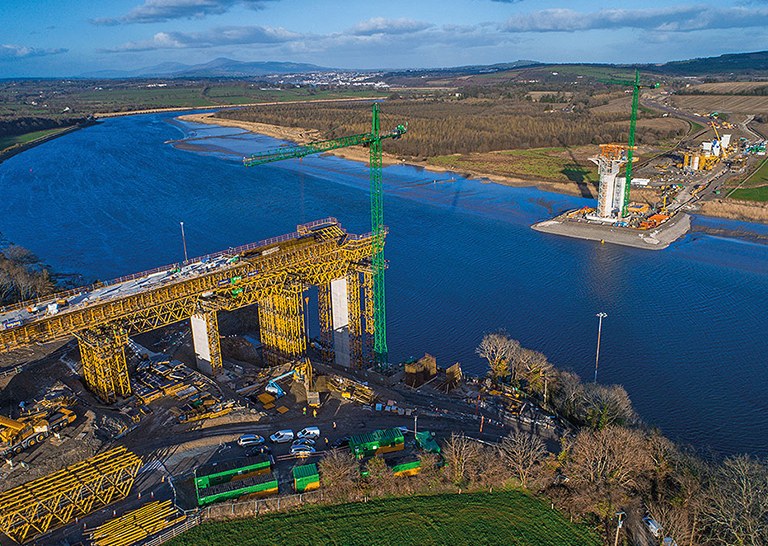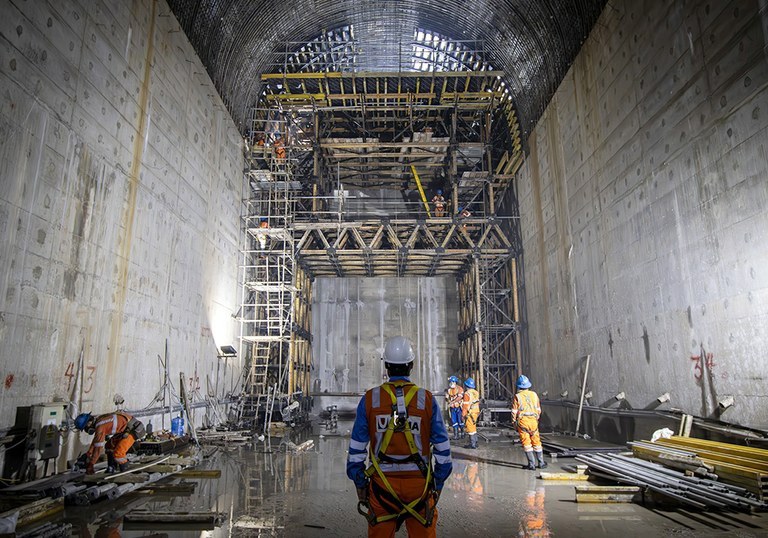New Ross, the longest extradosed bridge in the world

The bridge over the Barrow River, is an extradosed structure 887 m in length, making it the longest bridge of its kind in the world. This type of bridge is characterised by its cables set at lower angles, meaning that pylons are shorter in relation to deck span lengths.
ULMA provided comprehensive services, from the bid and design to material provisioning and closing the project. One of the key factors in the decision to rely on ULMA as a supplier was the comprehensive technical solution proposed, as well as its logistical capacity to provision the tonnes of material necessary on schedule. Coordination with the client and a continual onsite presence allowed ULMA to respond effectively and rapidly to any circumstances that arose in the project.
The project consists of eight piers with heights ranging from 12 m to 36 m. The piles are rectangular, measuring 2 m by 6 m and 3.4 m by 6 m, with chamfers at the corners and midline of the section. The formwork employed for the piers, both in the rectangular and circular sections, was the ENKOFORM V-100 system supported by CR-250 climbing brackets.
The majority of the bridge was built using gantry falsework, since the geotechnical complexity of the ground below made other shoring systems impractical or impossible. The gantry falsework allowed for savings in foundation work.
The modular MK System was used to span lengths of 35 m, 45 m, 75 m, and 95 m, respectively, in the approach spans. Forming trusses, shoring towers, and formwork assemblies, this system provided significant savings in diverse applications. In addition to flexibility, the system also provides productivity onsite. Material reuse and rotation without the need for disassembly and reassembly greatly reduced the workload and additional safety precautions necessary.







